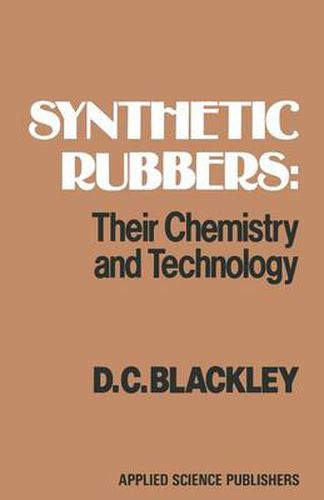Readings Newsletter
Become a Readings Member to make your shopping experience even easier.
Sign in or sign up for free!
You’re not far away from qualifying for FREE standard shipping within Australia
You’ve qualified for FREE standard shipping within Australia
The cart is loading…






This title is printed to order. This book may have been self-published. If so, we cannot guarantee the quality of the content. In the main most books will have gone through the editing process however some may not. We therefore suggest that you be aware of this before ordering this book. If in doubt check either the author or publisher’s details as we are unable to accept any returns unless they are faulty. Please contact us if you have any questions.
This book has its origin in a proposal made a few years ago that I should collaborate with Dr H. J. Stern in the production of a third edition of his well-known text-book entitled Rubber: Natural and Synthetic. The sugges tion was that I should contribute a series of chapters on synthetic rubbers. Although, in the event, it has not proved possible to publish the full book in the form originally planned, it was apparent that, with some restructuring, the material which I had collected would be valuable as an independent summary of the chemistry and technology of synthetic rubbers. It is in this form that the material is now offered. The primary purpose of this book is to provide a brief up-to-date survey of the principal types of synthetic rubber which have been and are currently available. Two classes of material are included which are regarded by some as being thermoplastics rather than rubbers, namely, plasticised polyvinyl chloride and the thermoplastic synthetic rubbers. The topics which are covered for each main family of synthetic rubbers are (i) the sources of the monomers, (ii) polymerisation procedures and the effects of important polymerisation variables upon the rubber produced, (iii) the types of rubber currently available commercially, (iv) interesting aspects of the compounding of the rubbers, with special reference to such matters as vulcanisation, reinforcement, protection against degradation, and (where appropriate) plasticisation, and (v) an indication of applications.
$9.00 standard shipping within Australia
FREE standard shipping within Australia for orders over $100.00
Express & International shipping calculated at checkout
This title is printed to order. This book may have been self-published. If so, we cannot guarantee the quality of the content. In the main most books will have gone through the editing process however some may not. We therefore suggest that you be aware of this before ordering this book. If in doubt check either the author or publisher’s details as we are unable to accept any returns unless they are faulty. Please contact us if you have any questions.
This book has its origin in a proposal made a few years ago that I should collaborate with Dr H. J. Stern in the production of a third edition of his well-known text-book entitled Rubber: Natural and Synthetic. The sugges tion was that I should contribute a series of chapters on synthetic rubbers. Although, in the event, it has not proved possible to publish the full book in the form originally planned, it was apparent that, with some restructuring, the material which I had collected would be valuable as an independent summary of the chemistry and technology of synthetic rubbers. It is in this form that the material is now offered. The primary purpose of this book is to provide a brief up-to-date survey of the principal types of synthetic rubber which have been and are currently available. Two classes of material are included which are regarded by some as being thermoplastics rather than rubbers, namely, plasticised polyvinyl chloride and the thermoplastic synthetic rubbers. The topics which are covered for each main family of synthetic rubbers are (i) the sources of the monomers, (ii) polymerisation procedures and the effects of important polymerisation variables upon the rubber produced, (iii) the types of rubber currently available commercially, (iv) interesting aspects of the compounding of the rubbers, with special reference to such matters as vulcanisation, reinforcement, protection against degradation, and (where appropriate) plasticisation, and (v) an indication of applications.